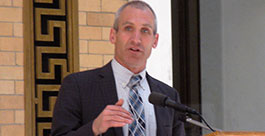Main menu
-
Our Field
Learn how community development organizations help create places of opportunity where ALL people live with dignity while participating in and benefiting from our Commonwealth's economy.

-
Advocacy
MACDC advocates on behalf of our members and the communities they serve to create the public and private sector policies that will promote community development throughout Massachusetts.
- Overview
- Boston Mayoral Race
- COVID-19 Policy Priorities
- 2014 Gubernatorial Candidates
- 2018 Gubernatorial Forum
- State Policy Priorities
- Federal Policy Priorities
- Boston Policy Issues
- Support CITC Extension
- TAKE ACTION!
- Highlights: Governor Baker at 2018 Convention
- Past Policy Archive
- Share the Impact of CITC
- State Policy Archive

-
Programs & Services
MACDC’s programs and services are designed to support our members in specific areas of community development and to strengthen the effectiveness of the broader community development system.
- Overview
- Affordable Housing
- Alliance for Racial Equity
- Boston Pilot Program
- CDCs & Health
- Climate and Energy
- Community Organizing
- Housing Quality & Health Equity Initiative
- Mel King Institute
- Peer Groups
- Racial Equity Pledge
- Small Business Econ. Dev.
- Suburban and Small Town Housing Caucus
- The Innovation Forum
- Technical Assistance

-
CITC
The Community Investment Tax Credit provides a 50% state refundable tax credit for donations to selected Community Development Corporations in Massachusetts.

-
Online Resources
MACDC provides a variety of online resources from job listings at member organizations to community development reports and research. This information is updated frequently.

- News




